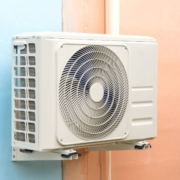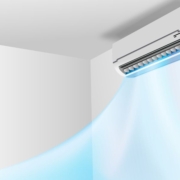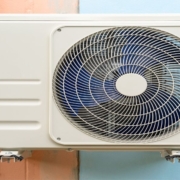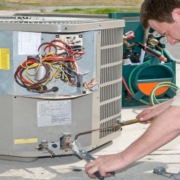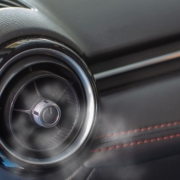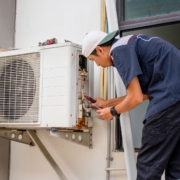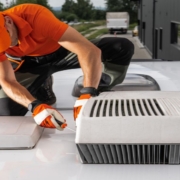How to Reset AC Pressure Switch
The pressure switch in an air conditioning system plays a critical role in maintaining safe and efficient operation. It monitors refrigerant pressure and prevents the system from operating under unsafe conditions. If the pressure is too high or too low, the switch may shut down the AC. Resetting the AC pressure switch can restore functionality, but it requires understanding the system, safety precautions, and proper procedures.
Understanding the AC Pressure Switch
The AC pressure switch is a safety device installed in the refrigeration cycle. Its primary function is to monitor high-side and low-side pressure levels. The low-pressure switch ensures the refrigerant level is sufficient to prevent the compressor from running dry, while the high-pressure switch protects against excessive pressure that could damage components.
Pressure switches are commonly found in both residential and commercial systems. They are connected to the electrical control circuit of the AC unit and can interrupt power to the compressor when pressure levels exceed the specified range. Typical cut-in and cut-out pressures vary depending on the system and refrigerant type.
Reasons the Pressure Switch Trips
Several factors can cause the AC pressure switch to trip, preventing the system from operating. Low refrigerant levels due to leaks can trigger the low-pressure switch. High pressure may occur from dirty condenser coils, restricted airflow, or overcharged refrigerant. Electrical issues, such as loose wiring or a faulty switch, can also cause false trips.
A tripped pressure switch indicates an underlying issue that needs attention. Resetting the switch alone without addressing the root cause may result in repeated trips or damage to the compressor.
Steps to Reset the AC Pressure Switch
Before attempting to reset the switch, turn off power to the AC system at the breaker to ensure safety. Identify the location of the pressure switch, usually near the compressor or on the refrigerant lines. Consult the manufacturer’s manual for the exact location and specifications.
Some pressure switches reset automatically after the system cools and pressures normalize. If the switch has a manual reset, press the reset button or toggle the switch according to the manufacturer’s instructions. After resetting, restore power and observe the system to ensure normal operation.
If the pressure switch trips again immediately, it indicates an unresolved issue such as low refrigerant, blocked airflow, or mechanical failure. In this case, professional diagnosis and repair are required.
Safety Considerations
Working with the AC pressure switch involves handling high-pressure refrigerant and electrical components. Improper handling can cause injury or damage to the system. Certified HVAC technicians have the necessary tools, gauges, and knowledge to safely troubleshoot and reset pressure switches.
It is important to never attempt to bypass the pressure switch. Doing so can lead to compressor damage, refrigerant leaks, or system failure. Ensuring all electrical connections are secure and components are intact is essential for safe operation.
Preventive Maintenance
Regular maintenance helps prevent pressure switch trips and prolongs the AC system’s lifespan. Checking refrigerant levels, cleaning condenser coils, and replacing air filters reduce the likelihood of abnormal pressures. Inspecting wiring and electrical components ensures proper communication with the control circuit.
Maintaining proper airflow and ensuring the system is neither undercharged nor overcharged with refrigerant are key preventive measures. These steps reduce unnecessary trips of the pressure switch and maintain consistent cooling performance.
FAQ
What does the AC pressure switch do?
It monitors refrigerant pressure and protects the compressor from operating under unsafe conditions caused by low or high pressure.
Can I reset the pressure switch myself?
Some switches have manual reset buttons, but resetting should only be done after turning off power and ensuring the underlying issue is addressed. Professional assistance is recommended if the switch trips repeatedly.
Why does the AC pressure switch keep tripping?
Frequent trips may result from low refrigerant, blocked airflow, dirty condenser coils, overcharged systems, or electrical faults.
Is it safe to bypass the pressure switch?
No. Bypassing the switch can cause serious damage to the compressor and other components.
How often should pressure switches be checked?
Pressure switches should be inspected during routine AC maintenance, typically once or twice a year, along with refrigerant checks and electrical inspections.
Conclusion
The AC pressure switch is a critical safety component that ensures proper operation and protects the compressor from damage. Trips can occur due to low or high refrigerant, airflow restrictions, or electrical issues. Resetting the pressure switch may restore system operation, but only after identifying and resolving the underlying cause. Proper handling, adherence to safety protocols, and regular maintenance are essential. Certified HVAC technicians can safely reset the switch, test system pressures, and perform necessary repairs to maintain efficient and reliable cooling. Regular inspection and maintenance reduce the risk of future trips and extend the life of the air conditioning system.


